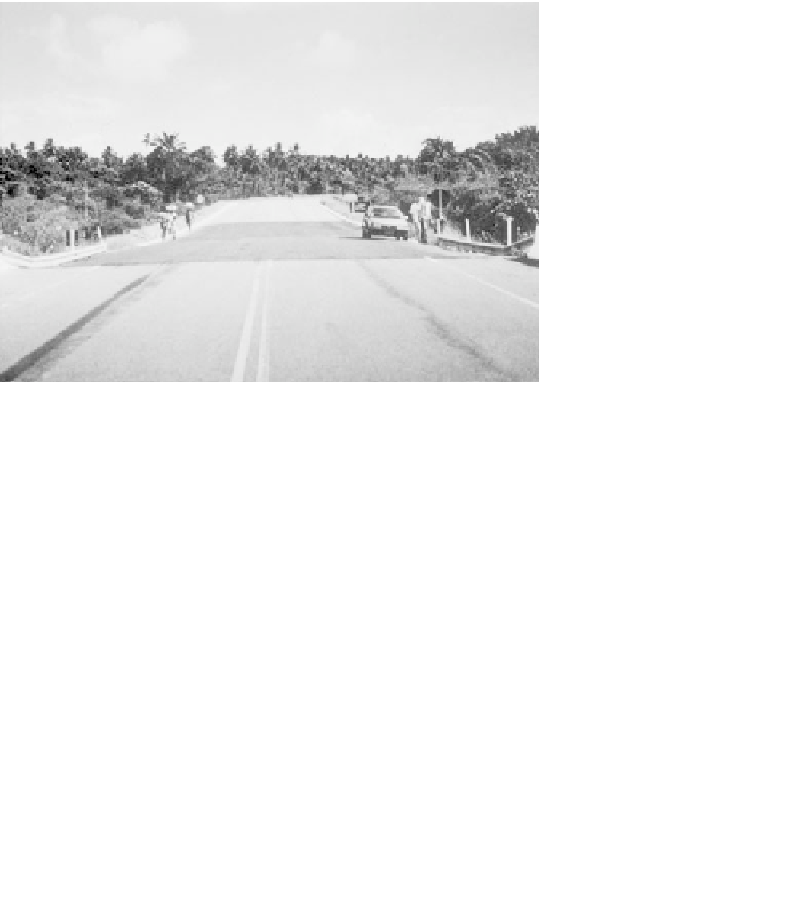Geoscience Reference
In-Depth Information
Figure 8
Repair of the pavement surface at the Sauipe River abutment.
For the Bu reinforced abutment no significant settlement of the highway
surface was observed so far. This was the highest reinforced structure (7.3mhigh),
and this absence of surface settlement can also be credited to the use of piles along
the structure base. However, horizontal movements of thewall face were observed,
as shown in
Fig. 10
.
The maximum horizontal displacement of the wall occurred at
its crest and was equal to 4 cm (approximately 0.55% of the wall height).
A severe damage to the reinforced structure of the Mucambo River
abutment was caused by a flood of the river, as presented in
Fig. 11
.
The
flood caused the erosion of the fill material below the concrete slab at the
base of the reinforced mass. This led to settlements of the rear part of
the structure with the collapse of several facing units (Fig. 11). In spite of
this severe distortion of the reinforced mass, the highway was still
operational with some repairs needed in the asphalt cap, particularly at the
edge of the lane immediately above the collapsed facing units, as shown in
Fig. 12
.
This shows that the flexible geotextile reinforced structure was able
to sustain large differential settlements and to accommodate them with
minor damage to the highway pavement.
Additional studies on the performance of the geotextile reinforced
abutments are being carried out (Fahel, 1998) as part of a research program
on the behavior of reinforced structures on soft soils at the University of
Brasilia, Brazil.









Search WWH ::

Custom Search